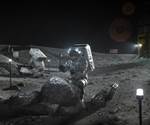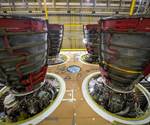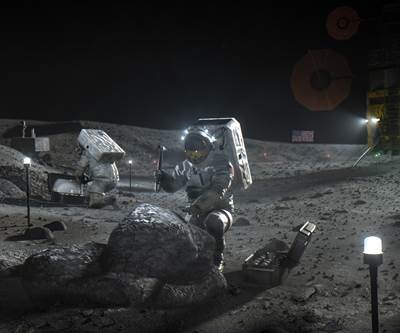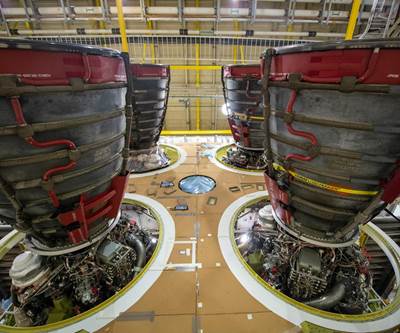NASA rocket motors arrive at Kennedy Space Center for Artemis program
The rocket motors are the next step toward NASA’s Artemis I space launch in 2021.
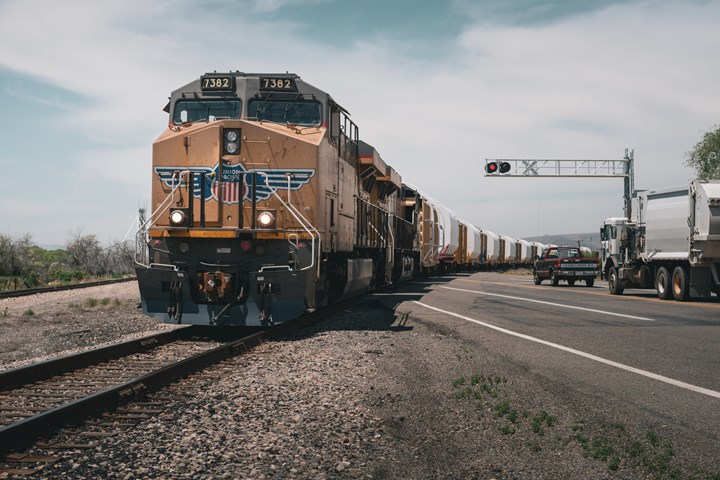
Source | NASA/Northrop Grumman
NASA (Washington, D.C., U.S.) reported on June 16 that the rocket booster segments that will help launch NASA’s first Space Launch System (SLS) rocket for the first Artemis I flight test mission around the Moon, arrived at the agency’s Kennedy Space Center (Merritt, Flor., U.S.) for launch preparations. The first elements of the SLS rocket to be stacked on the mobile launcher, all 10 booster segments were shipped by train from Promontory, Utah, U.S., on a 10-day journey, and represent a milestone for the NASA space project.
Artemis, NASA’s new lunar exploration program, aims to land the first woman and the next man on the Moon by 2024 to better prepare for human missions to Mars. NASA has split the Artemis program into three phases —Artemis I, II and III. As of June 2020, Artemis I — a test flight of the SLS rocket with the Orion spacecraft with no crew — is set to launch in November 2021. The first crewed flight test of NASA’s Space Launch System (SLS) rocket, the Artemis II mission, is targeted for a 2022 launch, and Artemis III — the official launch date to land the first woman and next man on the Moon — is planned for 2024.
“The arrival of the booster segments at Kennedy is just the beginning of the SLS rocket’s journey to the pad and onward,” says NASA administrator, Jim Bridenstine.
Each rocket booster has individual motor segments, located between the forward assemblies and aft skirts, making up the booster’s largest single component. The two SLS rocket boosters, four RS-25 engines and core stage, produce a combined total of more than 8.8 million pounds of thrust power during launch. Additionally, each booster segment, weighing 180 tons, is filled with propellant and outfitted with key flight instrumentation. Due to their weight, the booster lead contractor, Northrop Grumman (Falls Church, Va., U.S.), transported the segments in specially outfitted railcars to make the 2,800-mile trip across eight states to the Kennedy Space Center.
In preparation for the arrival of the booster segments, NASA’s Exploration Grounds Systems team at Kennedy assembled and tested the aft skirts and forward assemblies of the boosters, and practiced stacking procedures with booster pathfinders, or hardware replicas, earlier this year. Now, with the segments’ delivery, the team will prepare them for assembly and integration activities that start with offloading the segments. After attaching the aft segments to the aft skirts, NASA says the team will offload and store the remaining segments from the railcars in preparation for stacking.
NASA and Northrop Grumman have already completed casting of all 10 motor segments for the first and second Artemis lunar missions in 2019, and are now working on the boosters for the Artemis III mission. NASA notes that the only remaining pieces of hardware for the Artemis I flight test to be delivered to Kennedy are the launch vehicle stage adapter — which connects the rocket to the Orion spacecraft and will arrive this summer — and the SLS core stage, which will be transported to Kennedy by barge after the Green Run hot fire test later this year at NASA’s Stennis Space Center near Bay St. Louis, Miss., U.S.
Related Content
Next-generation airship design enabled by modern composites
LTA Research’s proof-of-concept Pathfinder 1 modernizes a fully rigid airship design with a largely carbon fiber composite frame. R&D has already begun on higher volume, more automated manufacturing for the future.
Read MoreA new era for ceramic matrix composites
CMC is expanding, with new fiber production in Europe, faster processes and higher temperature materials enabling applications for industry, hypersonics and New Space.
Read MoreCryo-compressed hydrogen, the best solution for storage and refueling stations?
Cryomotive’s CRYOGAS solution claims the highest storage density, lowest refueling cost and widest operating range without H2 losses while using one-fifth the carbon fiber required in compressed gas tanks.
Read MoreManufacturing the MFFD thermoplastic composite fuselage
Demonstrator’s upper, lower shells and assembly prove materials and new processes for lighter, cheaper and more sustainable high-rate future aircraft.
Read MoreRead Next
Composites in the race to space
Advanced materials use in current and upcoming NASA missions.
Read MoreNASA names companies to develop human landers for Artemis
Blue Origins, Dynetics and SpaceX are developing human landing systems concepts for Artemis’s 2024 moon mission.
Read MoreNASA extends SLS rocket engines contract with Aerojet Rocketdyne
Under the $1.79 billion contract, Aerojet Rocketdyne will manufacture 18 additional Space Launch System (SLS) RS-25 rocket engines for Artemis missions.
Read More


